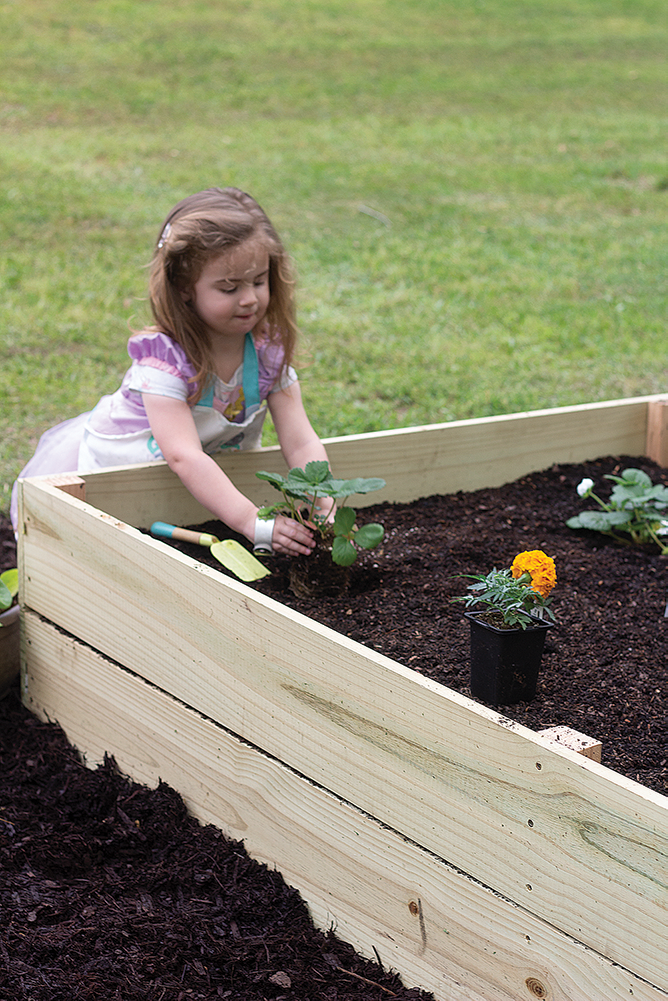In this new world of social distancing, many of us are finding that our personal outdoor spaces offer many opportunities for safely releasing pent-up energy and anxiety. Regardless of the size and shape of your outdoor space, there are ways to transform them into beautiful and productive garden sanctuaries.
You can create a garden in any sized space by using pots and other containers to grow lovely flowers, handsome shrubs and trees, nutritious and delicious fruits and vegetables and flavorful herbs. If you want to take that idea a step further, though, consider building a raised bed.
Raised beds offer us the chance to create better soil, increase plant productivity and make gardening more accessible, especially for folks with mobility issues or who have trouble bending and stooping. What’s more, the concept of a raised bed can be used in almost any situation, from a tiny apartment balcony to a large yard.
Here’s a step-by-step guide to get you started with your own raised bed project.
Start with size
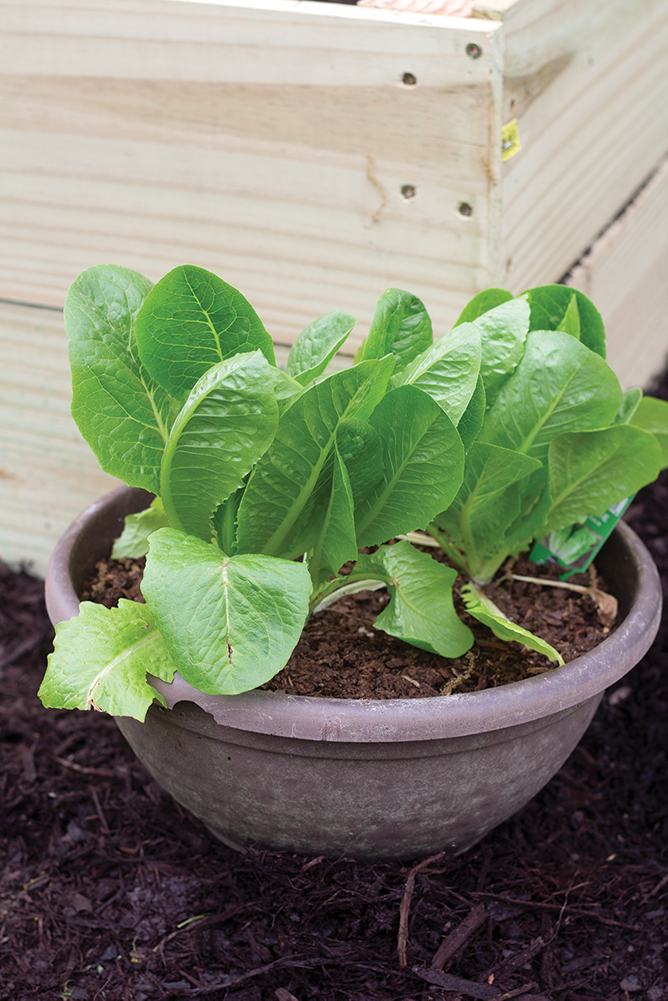
Raised beds should be no more than 4 feet wide to ensure you can reach all areas of the bed from the sides without stepping into the bed itself. They should also be at least 6 inches deep to ensure plants have ample room to put down roots. If you want to grow more deeply rooted vegetables such as tomatoes, melons and potatoes, aim for at least 8 to 12 inches deep.
Other than that, raised beds can be as large or small as your tastes and space allow, and they can be custom built to accommodate any physical needs, such as access from a standing or sitting position. Be aware that the deeper the bed, the more soil material is needed to fill it, which can add to the expense. Another option to increase the height for accessibility by placing the raised bed from on legs or on a tabletop.
Pick a site
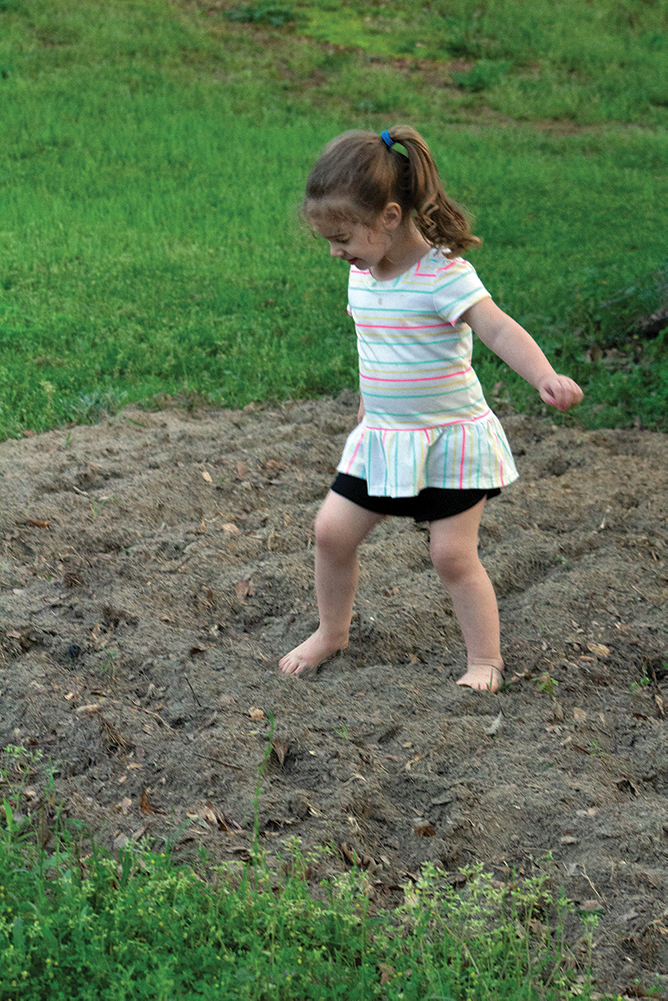
Since most raised beds are permanent structures, it’s vital to locate them in a spot with the access to the appropriate amount of sunlight for the plants you want to grow — six to eight hours of sunlight is needed for most fruits, vegetables, herbs and many flowers, though you can create a shady raised bed filled with impatiens, hostas and ferns or with edible crops such as leafy greens, cool-season herbs (cilantro, parsley and dill), carrots, beets, potatoes and garlic.
The site should also afford plenty of room to navigate around the bed once it’s in place and have access to a water supply. In fact, one of the biggest drawbacks of raised bed or container gardening is the need for added irrigation during hot and/or dry periods, so make sure you can get a hose to it or consider installing an irrigation system in the bed.
Frame choices

A raised bed can be created by simply making a mound of soil in a garden bed; however, without an enclosure around it, the mound will likely erode during the first growing season and you’ll have to start all over next year. If you want a raised bed to last season after season, you need to contain the soil in some kind of frame, the likes of which depends on your budget, building skills and design tastes.
Bricks, cinderblocks, rocks, metal sheeting, metal stock tanks and a variety of recycled or repurposed items can be used to frame your bed, though the most common choice is a wooden frame, which includes a variety of options.
For a long-lasting, attractive and truly organic-friendly wooden frame, use cedar, redwood or fir lumber, all of which have a natural resistance to rot. However, these woods tend to be expensive, so pressure-treated lumber and landscape timbers are effective and affordable options. (Today’s pressure-treated lumber is deemed safe to use for growing food crops.)
If you’re using repurposed materials, such as old railroad ties, shipping pallets, barrels and buckets, make sure they do not contain chemicals or substances that could be toxic to your soil, plants or, especially with food crops, to you. Experts differ about the safety of railroad ties, but if that’s your best option make sure they are not still oozing creosote.
Preparing the site
Once you’ve chosen a frame, make sure to prepare the ground where it will sit with care. If you plan to erect the frame directly on the sod, place landscape cloth or a thick layer of newspapers or cardboard on the existing vegetation to keep it from growing up into the bed from below.
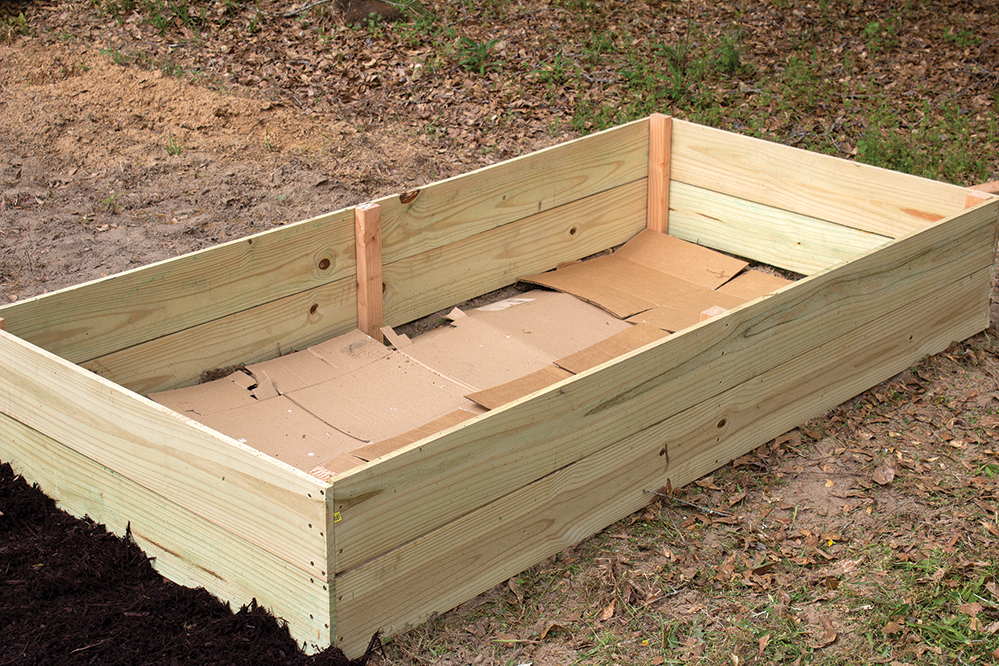
If you want to ensure the site is as weed free and well-draining as possible, take some time to remove all surface vegetation and dig down three or so inches to create a trench for the frame. Doing this allows you to level the site, remove future weed problems, improve drainage below the bed area and give greater support and stability to the frame if you sink it into the hole.
Creating soil
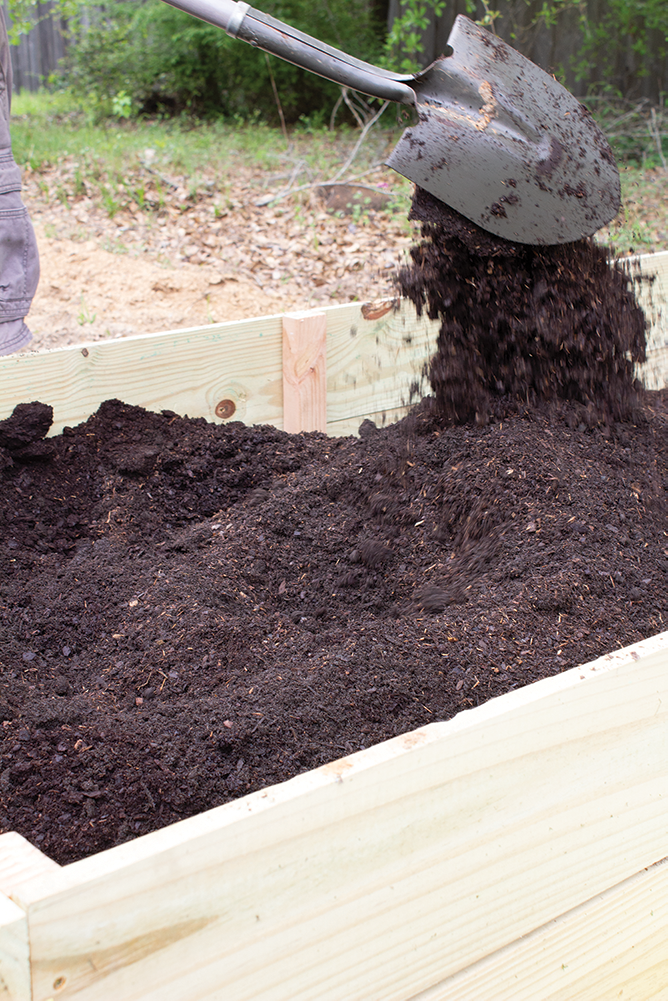
Once the frame is in place, it’s time to create the best growing media possible. You can do this by using any existing soil removed in the digging process, but only if it’s healthy (no nematodes or contaminants that might harm your crop — get a soil test for it if you’re not sure). If it’s clean, this soil can be mixed with potting or high-quality topsoil and other amendments.
If you’d rather create brand new soil, aim for a blend of 60 percent topsoil, 30 percent compost and 10 percent potting soil (soilless growing media made from a mix of peat moss, perlite and/or vermiculite). The best recipe for your needs depends on the crops you want to grow, so find a recipe that best matches your plants’ needs.
Learning more
Needless to say, this just scratches the surface of information about raised bed gardens, but more detailed information is available from many expert sources. One great place to start is on the Alabama Cooperative Extension System’s website at aces.edu, where you can find an in-depth article on raised bed gardening (use their search engine to find it or go to aces.edu/blog/topics/lawn-garden/raised-bed-gardening/) as well as information on many other gardening projects you may want to try during this era of social distancing and for years to come.

